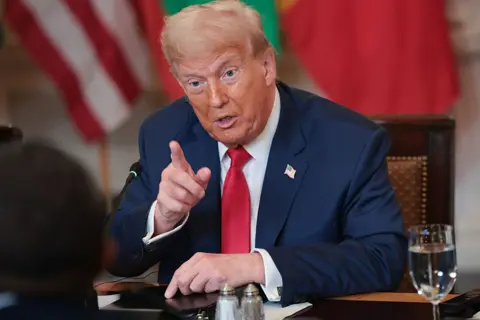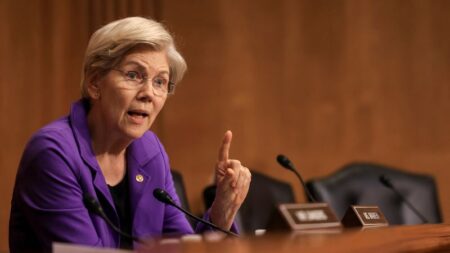In a significant development on international trade relations, President Donald Trump has declared that from August 1, the European Union (EU) and Mexico will face a substantial 30% tariff on all imports into the United States. The announcement comes amid ongoing discussions surrounding trade agreements and economic partnerships between these entities. The tariffs have raised eyebrows and prompted concerns regarding their potential implications on global trade dynamics and the relationships among the nations involved.
President Trump communicated his decisions through letters published on his Truth Social platform. Beyond the EU and Mexico, similar advisories have been directed at several other countries, marking a clear shift in the U.S.’s trade strategy. The timing of this announcement has led many to speculate on the potential for increased trade tensions, particularly because Trump has expressed readiness to escalate tariffs further should either of these trading partners retaliate against the U.S. measures.
The EU, being America’s largest trading partner, is particularly keen to reach a resolution before the implementation date. Prior to this announcement, the 27-member bloc had initiated discussions to address the persistent trade deficits and barriers hampering a more equitable trading environment. The longing for a cooperative solution was evident in the remarks from Ursula von der Leyen, the President of the European Commission. She indicated that the EU is still committed to negotiating a deal that could avert these heavy tariffs.
In his correspondence, Trump emphasized the need for a reevaluation of the existing trade relations, arguing that the U.S. has endured years of enduring trade disparities. He criticized the EU’s tariffs and non-tariff barriers that have reportedly contributed to an ongoing trade deficit, which according to the U.S. Trade Representative’s office amounted to a staggering $235.6 billion in 2024 alone. This statistic outlines the scale of the issue at hand and underscores the urgency for a recalibration of trade terms.
Trump’s critique of the EU is particularly pointed; he views the trade imbalance as a significant problem that warrants immediate attention. He characterized the current trading relationship as “far from reciprocal,” reflecting a sentiment that has underpinned many of his policy decisions throughout his presidency. This rhetoric is not novel, as Trump has previously positioned the EU as a frequent target for his trade-related grievances, with prior announcements of tariffs indicating a pattern of escalating tensions.
Moreover, in his correspondence with Mexico’s leadership, Trump expressed frustration regarding border control measures and their efficacy in combatting drug trafficking. His assertion that “Mexico has been helping me secure the border, BUT, what Mexico has done is not enough” highlights his administration’s ongoing concerns about security and illegal activities that he blames on lax enforcement.
In response to the holiday of new tariffs, Von der Leyen articulated the EU’s commitment to upholding its interests, asserting the region’s openness and fair trading practices. She signaled that the EU would explore countermeasures if the tariffs are executed, indicating a readiness to stand firm in the face of potential economic adversity.
The developments surrounding these new tariffs reflect a complicated interplay of economic policy, national security concerns, and international relations. As the implementation date of August 1 approaches, the stakes for all involved parties will continue to rise, emphasizing the importance of diplomatic engagements that could lead to more favorable outcomes. The upcoming period may become pivotal in determining the future of U.S.-EU and U.S.-Mexico trade relations, amid an atmosphere charged with uncertainty.










